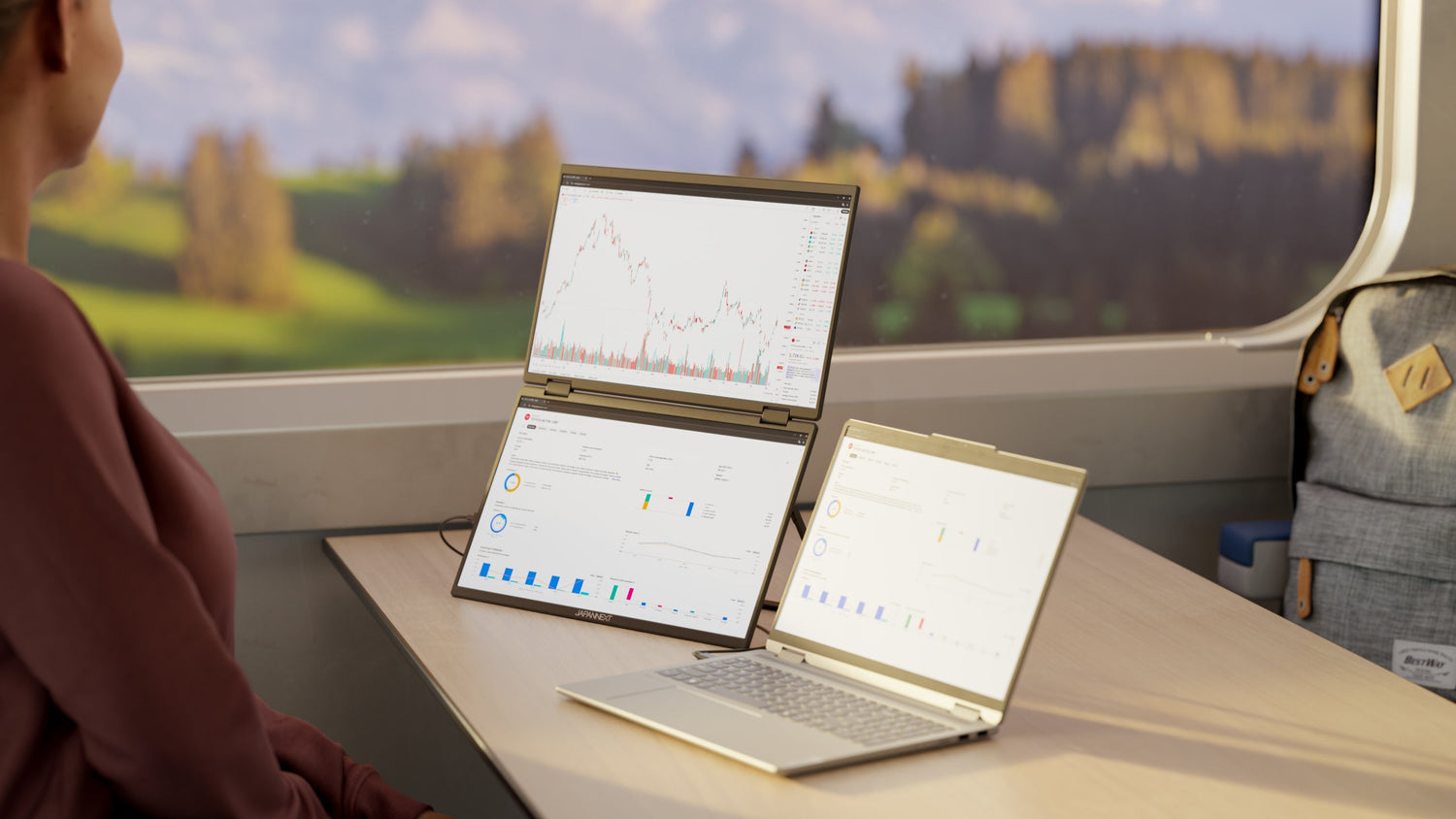With the constant evolution of display technologies, curved monitors have appeared in modern offices. These monitors promise enhanced visual immersion and claim to increase user comfort. But what about their effectiveness at work? Let's take a look at the pros, cons, and considerations when choosing a curved desktop monitor for a professional environment.
The benefits of curved monitors in the office
Improved range of vision
One of the main attractions of curved monitors is their ability to expand the field of vision. Thanks to the curvature of the screen, images appear to envelop the user, reducing peripheral distractions and helping to stay focused on what matters. This feature can be particularly beneficial for those working with software that requires divided attention between multiple windows open simultaneously.
Reduced eye fatigue
Another often mentioned benefit of curved monitors is reduced eye strain. By following the natural curve of the human eye, these displays can reduce visual strain by maintaining a constant distance between the eye and the displayed image. For office workers who spend long hours in front of the screen, this can result in a noticeable improvement in visual comfort.
Increased immersion and productivity
Curved monitors offer a more immersive experience compared to flat monitors. This increased immersion can enhance focus and, therefore, productivity. Tasks requiring attention to detail, such as graphic design or video editing, benefit greatly from this technology. An immersive workspace also reduces mental interruptions, allowing better time management and resources.
Challenges to consider
Higher cost
Cost is one of the biggest limiting factors when adopting curved monitors. These monitors are generally more expensive than their flat counterparts. This could represent a significant investment for companies, especially those with many workstations to equip. It is therefore necessary to assess whether the potential benefits justify this initial investment.
Dimensions and office space required
Setting up a curved monitor often requires more space due to its particular shape. In offices where space is limited, this can pose a logistical problem. In addition, the greater weight of these monitors can make their installation and movement more difficult compared to flat monitors.
Applications and software compatibility
Although most current applications are compatible with curved monitors, some specific software might not make the most of this technology. It is essential to check software compatibility before investing in this type of monitor to ensure that they meet specific professional requirements.
Criteria to choose a curved monitor for work
Screen size and resolution
When choosing a curved monitor, size and resolution are two fundamental characteristics to consider. The wider the screen, the more pronounced its curvature effect, providing a better immersive experience. Higher resolutions, such as Quad HD (QHD) or Ultra HD (4K), are recommended to ensure superior image quality and optimal clarity for detailed work.
Here is an example of a 37.5-inch UWQHD+ monitor ideal for office automation with exceptional image quality and features adapted to daily needs.
Refresh rate and response time
The refresh rate indicates how many times per second the image on the screen is updated and plays a key role in the smoothness of animations. A high refresh rate (at least 60 Hz) combined with a low response time (<5 ms) ensures a motion blur-free visual experience, essential for demanding tasks like video editing and graphic design.
- Optimal screen size: 27 inches and above
- Ideal resolution: WQHD or 4K
- Recommended refresh rate: ≥60 Hz
- Desired response time: < 5 ms
Here is an example of a 37.5 inch curved monitor with a response time of 1ms and a refresh rate of 144hz!
Ergonomics and adjustability
To maximize the ergonomic benefits of curved monitors, it is crucial to choose models with good adjustment flexibility. The ability to adjust the height, tilt and rotation of the screen allows you to find a comfortable position, thus minimizing the risk of musculoskeletal disorders (MSD). Adjustable supports can also help improve the overall ergonomics of the workstation.
Here is an example of a 34-inch curved monitor that is adjustable in height, but can also tilt up to 15° and create a rotation of 30°.
Practical examples of using curved monitors in the office
Working in the creative industry
Professionals in the creative industry, such as graphic designers, video editors, and 3D animators, benefit from curved displays for many reasons. The curvature of the screen allows for a panoramic view of projects in progress, making it easier to assess details and spot potential imperfections. Likewise, the tools and palettes often used in these trades can be easily arranged around the main display without detracting from the visualization of the final product.
Use in multi-monitor environments
In some professional environments, such as financial trading or data management, using multiple curved displays side by side is an effective solution. The visual continuity provided by curvature engages more fields of peripheral vision, increasing the amount of information visible at a glance and avoiding abrupt visual shifts between adjacent monitors.
Efficiency in programming and coding
IT developers can also benefit from using curved monitors. The increased screen space allows multiple code windows, debug consoles, and integrated development environments (IDEs) to be viewed simultaneously without compromising readability. This makes it easier to navigate between different elements of the project and increases overall efficiency.
Display Technologies and Innovation
HDR: High Dynamic Range
Incorporating HDR technology into curved monitors helps extend the dynamic range between the light and dark parts of an image. This technology ensures better color accuracy and deeper black levels, enriching the visual experience and making tasks involving graphics even more visually pleasing.
Personal preferences and choice of monitors
Workspace requirements and daily use
The appropriate selection of a curved monitor depends greatly on the individual features of the workspace and the personal preferences of each user. While a graphics designer might prefer a curved monitor for its large range of vision, a network administrator might prefer multiple standard monitors lined up for more segmented monitoring.
Try before you buy
Before investing in an expensive curved monitor, it is recommended to test different set ups. Many specialized stores now allow you to see monitors in action, helping to determine which option best meets the worker's particular needs. Take into account the comfort experienced during this test phase, as it will be decisive for prolonged use.



